The Streak Continues: 268
This blog was published just at 3:17 am from my Mom’s home at Holbrook, Long Island, NY. I am heading to Nickerson on my own for a busman’s holiday and then heading to younger daughter Alissa’s to baby sit for my grandson Ilyas. It took me about 3 hours to put this post together. It makes 268 consecutive days with a new educational blog post. I am on Long Island until this coming Thursday while visiting my elderly (gonna be 92 soon) Mom, my younger sister Arna, my younger daughter Alissa and her wonderful family, and doing some late summer bird photography. So far, the photography has been phenomenal and this morning at JBWR was amazingly productive.
As always, I would appreciate your using the BIRDS AS ART B&H affiliate links for all of your major gear, video, and electronic purchases, using our Amazon logo-link for all of your household purchases, and visiting the BAA Online Store for your tripod, tripod head, LensCoat, miscellaneous, accessories, and eGuide purchases as well.
Nickerson Beach Short-Notice In-the-field Workshop Sessions
Please see below for details.
Your Help Is Needed
Sales for the August, 2014 via our BIRDS AS ART B&H affiliate links have been microscopically abysmal at best. If you need to purchase some new camera gear, please remember to use either our B&H logo link below or one of the product-specific links in the blog or the Bulletins. All should feel free to write me via e-mail for gear advice.
|
This image was created on Thursday morning past, 8/21/14, at Nickerson Beach in cloudy bright conditions. I used the Gitzo 3532 LS carbon fiber tripod, the Mongoose M3.6 head, the Canon EF 600mm f/4L IS II USM lens, the Canon Extender EF 2X III, and the Canon EOS-1D X. ISO 800. Evaluative metering +1 2/3 stops as framed: 1/160 sec. at f/11 in Manual mode. Central Sensor (by necessity)/AI Servo-Expand/Rear Focus AF on the base of the bird’s bill and re-compose. When you add the 2X TC to an f/4 lens with the 1DX or the 5D III hit the MFn button once to toggle to AF Expand and enjoy 4 extra AF sensors. Learn everything there is to know about the 1D X and 5D III AF systems including how to manage the various AF Area Selection Modes, when to use which one, and several ways to move the AF sensor around in the 1D X AF Guide and the 5D Mark III User’s Guide. Click here to see the latest version of the Rear Focus Tutorial. Click on the image to see a larger version.
|
One Species/One Lens…
The variety of images that can be created with a single lens, in this case the 600 II, with both teleconverters in a fanny pack for easy access is simply amazing, limited only by the photographer’s imagination and skill (he said modestly….)
|
This image was also created on Thursday morning past, 8/21/14, at Nickerson Beach in cloudy bright conditions. I used the Gitzo 3532 LS carbon fiber tripod, the Mongoose M3.6 head, the Canon EF 600mm f/4L IS II USM lens, the Canon Extender EF 2X III, and the Canon EOS-1D X. ISO 800. Evaluative metering +1 1/3 stops as framed: 1/320 sec. at f/13 in Manual mode. Central Sensor (by necessity)/AI Servo-Expand/Rear Focus AF just forward of and above the nares (nostrils) was active at the moment of exposure. When you add the 2X TC to an f/4 lens with the 1DX or the 5D III hit the MFn button once to toggle to AF Expand and enjoy 4 extra AF sensors. Learn everything there is to know about the 1D X and 5D III AF systems including how to manage the various AF Area Selection Modes, when to use which one, and several ways to move the AF sensor around in the 1D X AF Guide and the 5D Mark III User’s Guide. Click here to see the latest version of the Rear Focus Tutorial. Click on the image to see a larger version.
|
Image Question
Why did I focus about 1/3 of the way down the bill rather than on the bird’s eye (a new technique that I developed only very recently)?
|
This is another one from that first wonderful Thursday morning at Nickerson. I created this one in cloudy bright conditions with the Gitzo 3532 LS carbon fiber tripod, the Mongoose M3.6 head, the Canon EF 600mm f/4L IS II USM lens, the Canon Extender EF 2X III, and the Canon EOS-1D X. ISO 800. Evaluative metering +1 2/3 stops as framed: 1/320 sec. at f/11 in Manual mode. Central Sensor (by necessity)/AI Servo-Expand/Rear Focus AF on the bird’s neck was active at the moment of exposure. When you add the 2X TC to an f/4 lens with the 1DX or the 5D III hit the MFn button once to toggle to AF Expand and enjoy 4 extra AF sensors. Learn everything there is to know about the 1D X and 5D III AF systems including how to manage the various AF Area Selection Modes, when to use which one, and several ways to move the AF sensor around in the 1D X AF Guide and the 5D Mark III User’s Guide. Click here to see the latest version of the Rear Focus Tutorial. Click on the image to see a larger version. .
|
Nearly Ready to Fly
This chick is a week to ten days older than the chick featured in yesterday’s blog post here. I was sitting behind my tripod in the same spot for both images. Deciding where to position yourself is a skill developed over several decades of studying bird behavior, the wind, and the qualities and direction of the light.
|
Yet another image that was created on Thursday morning past, 8/21/14, at Nickerson Beach in partly sunny conditions. I used the Gitzo 3532 LS carbon fiber tripod, the Mongoose M3.6 head, the Canon EF 600mm f/4L IS II USM lens and the Canon EOS-1D X. ISO 400. Evaluative metering +1 1/3 stops off the blue sky: 1/1600 sec. at f/4.5 in Manual mode was a slight under-exposure. Central Sensor/AI Servo-Surround/Rear Focus AF was well below the bird and active at the moment of exposure; somehow the system kept on tracking and produced a relatively sharp image…. Click here to see the latest version of the Rear Focus Tutorial. Click on the image to see a larger version.
|
Mood
The soft tones of the beach grasses create a tranquil mood in this image.
|
This image was created on Friday morning past (8/22/14) at Nickerson Beach in early morning light with the Gitzo 3532 LS carbon fiber tripod, the Mongoose M3.6 head, the Canon EF 600mm f/4L IS II USM lens, the Canon Extender EF 1.4X III, and the Canon EOS-1D X. ISO 400. Evaluative metering +2/3 stop as framed: 1/640 sec. at f/6.3 in Manual mode. Central Sensor AI Servo-Surround/Rear Focus AF on the skimmers on the ground and re-compose. Click here to see the latest version of the Rear Focus Tutorial. Click on the image to see a larger version. .
|
The Miracle of Survival
With thousand of beach-goers, garbage trucks, police and other patrol vehicles, assorted ATVs, lifeguard trucks, feral cats, and just plain idiots–we have seen folks intentionally run through the colony, it is simply amazing that the birds of Nickerson routinely enjoy great breeding success.
Your Favorite
Please take a moment to leave a comment and let us know your favorite image or images from today’s blog post. And be sure to let us know why you like the ones you do.
Learn to See and Think Like a Pro
Consider joining me on Tuesday or Wednesday morning. Depending on the weather, Tuesday afternoon might work. See immediately below for details.
Nickerson Beach Short-notice Weekday Beach-nesting Birds In-the-Field Workshop Sessions
Please note the new schedule: Tuesday & Wednesday mornings, AUG 26 or 27; $299 with lunch and image review. Monday or Tuesday afternoon, 5pm till sunset: $199. Limit 3/Openings 3.
This Just In!
The winds look perfect for Monday afternoon and Tuesday morning….
Join me on Long Island, NY soon to photograph Black Skimmers with chicks and young of all sizes and American Oystercatchers with grown young. The skimmers will be the stars of the show. Mid- to late August is prime time for photographing young skimmers. Parking is free.
If you would like to join me as above please call my cell at 863-221-2372 and leave a message if I do not pick up. In addition please shoot me an e-mail. Or, you can Jim on Monday or Tuesday in which case payment in full is due when you register and is non-refundable. Otherwise it will be cash on the barrelhead at the beach. Please print, complete, and sign the form that is linked to here and shoot us a scanned copy via e-mail or bring a hard copy with you.
If you have any questions please feel free to contact me via e-mail or by phone at 863-221-2372 and leave a message.
Be sure to like and follow BAA on Facebook by clicking on the logo link upper right. Tanks a stack!
Support the BAA Blog. Support the BAA Bulletins: Shop B&H here!
We want and need to keep providing you with the latest free information, photography and Photoshop lessons, and all manner of related information. Show your appreciation by making your purchases immediately after clicking on any of our B&H or Amazon Affiliate links in this blog post. Remember, B&H ain’t just photography!
Amazon.com
Those who prefer to support BAA by shopping with Amazon may use this link:
Amazon Canada
Many kind folks from north of the border, ay, have e-mailed stating that they would love to help us out by using one of our affiliate links but that living in Canada and doing so presents numerous problems. Now, they can help us out by using our Amazon Canada affiliate link by starting their searches by clicking here. Many thanks to those who have written.
Typos
In all blog posts and Bulletins, feel free to e-mail or to leave a comment regarding any typos, wrong words, misspellings, omissions, or grammatical errors. Just be right. 🙂

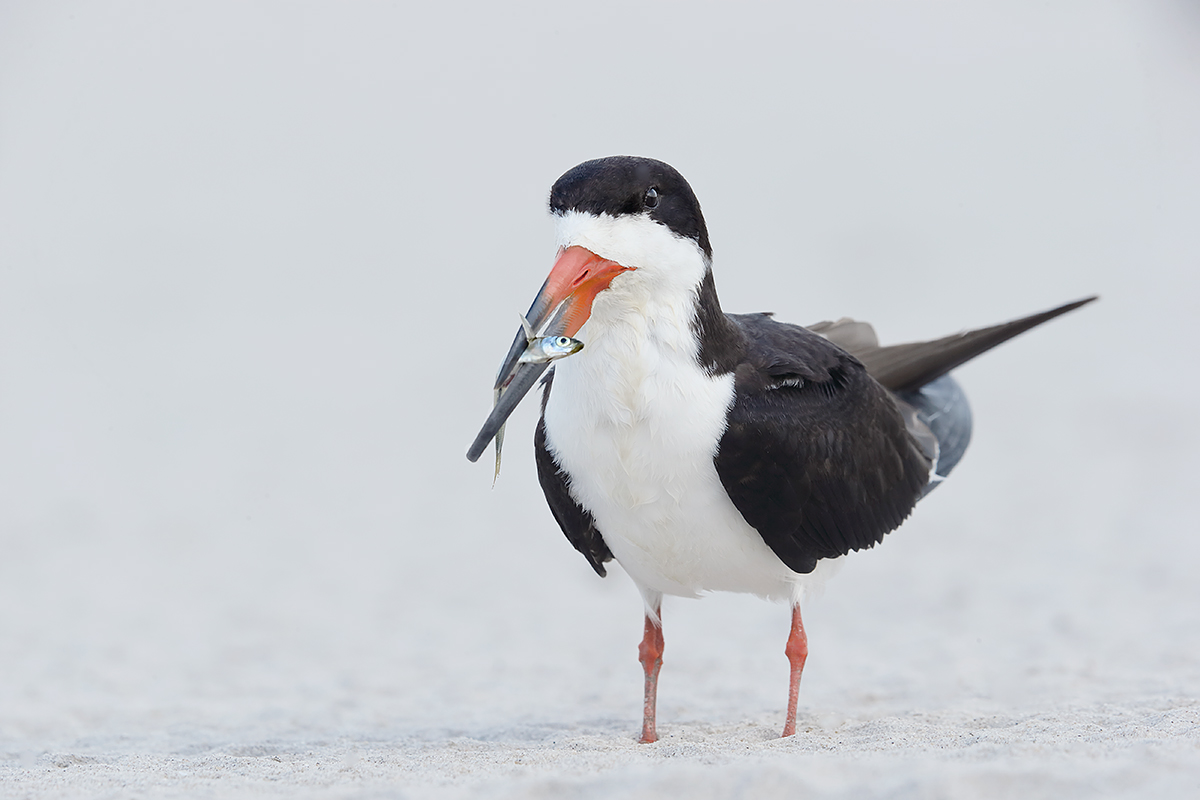
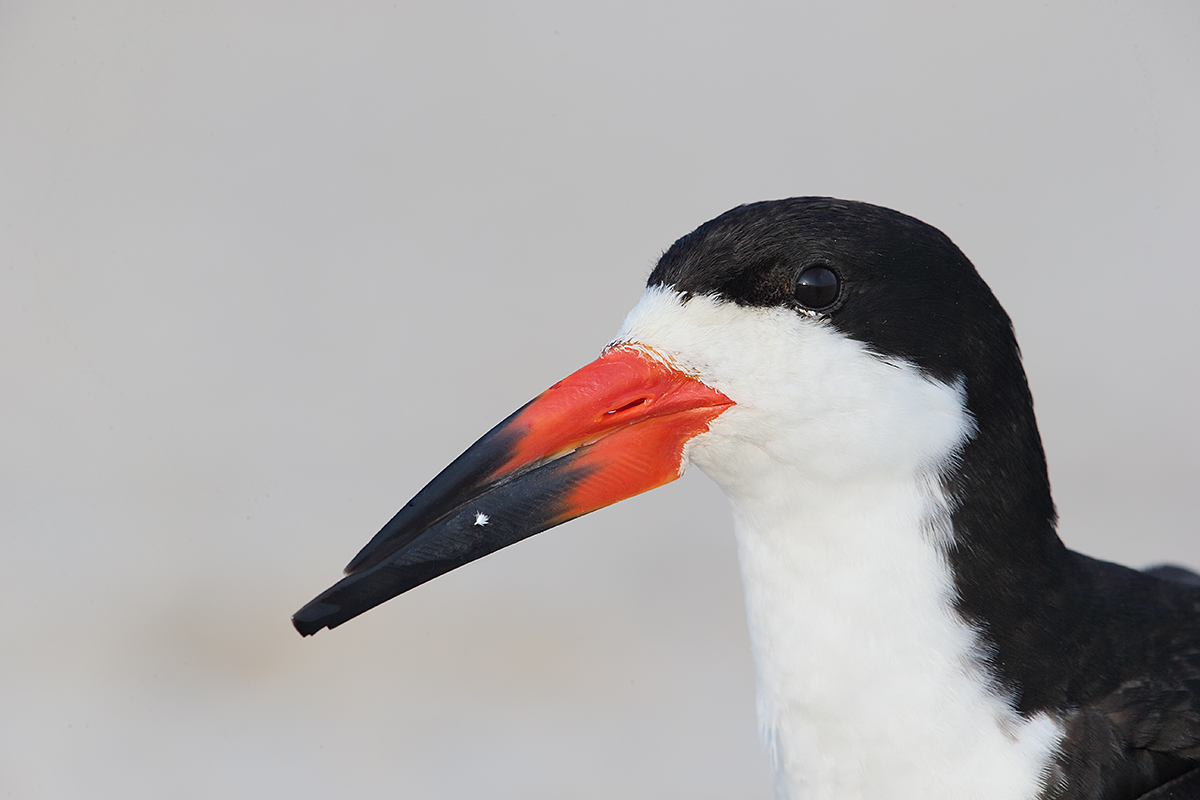
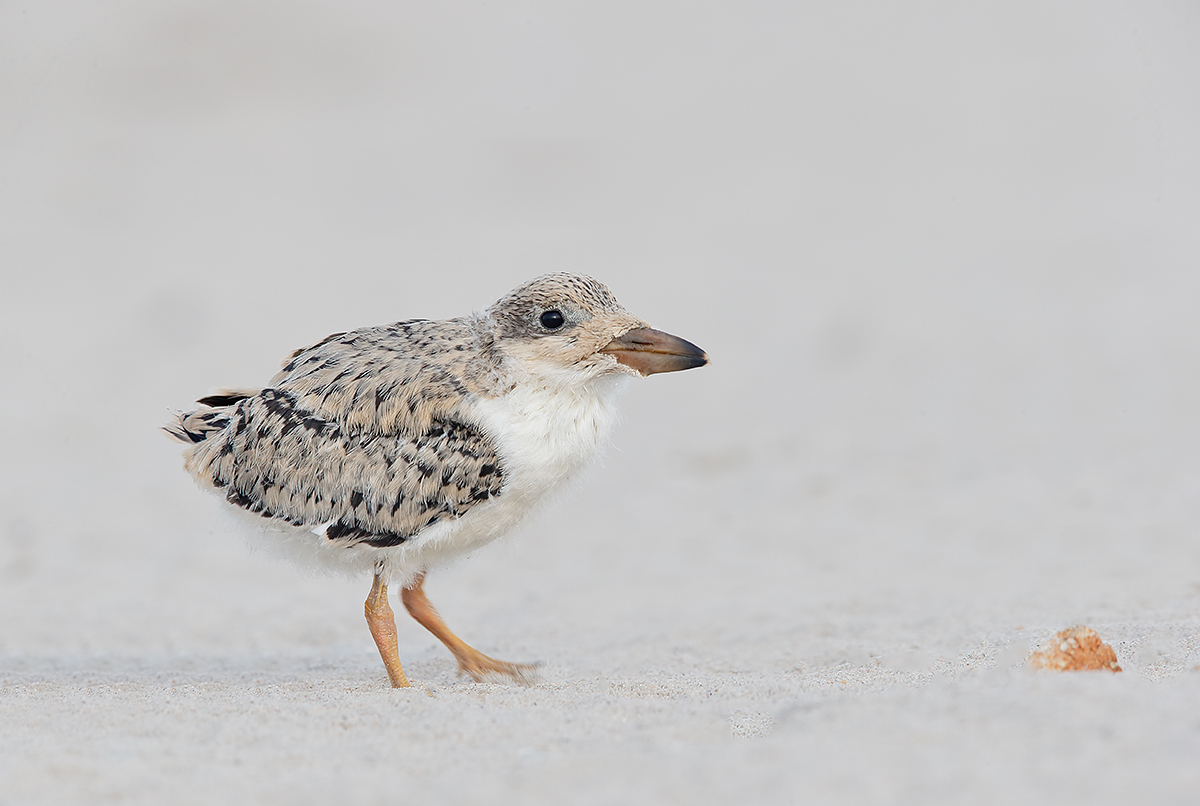
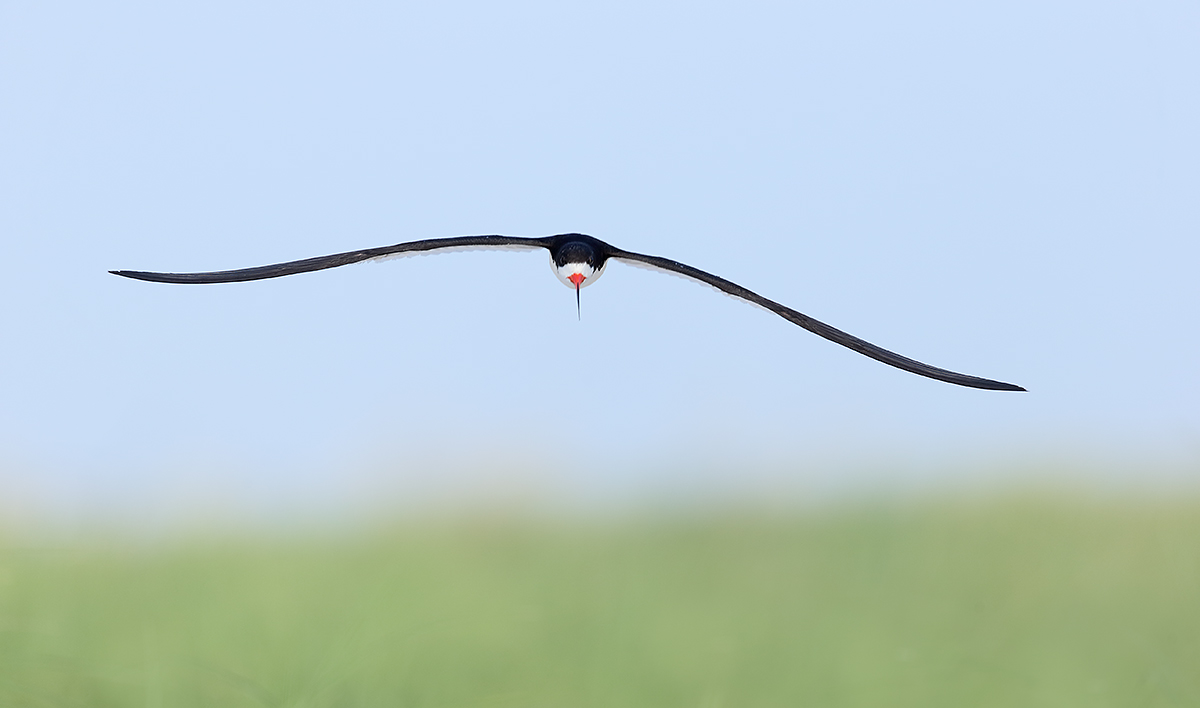
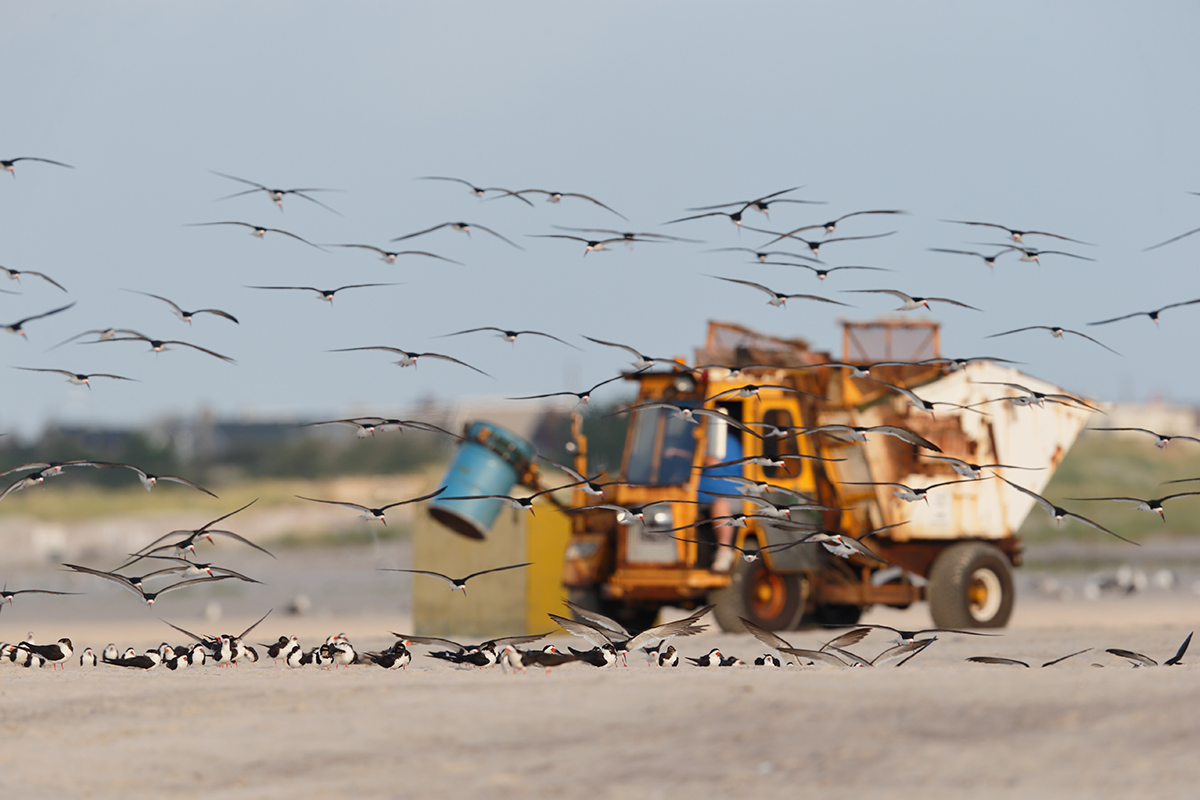
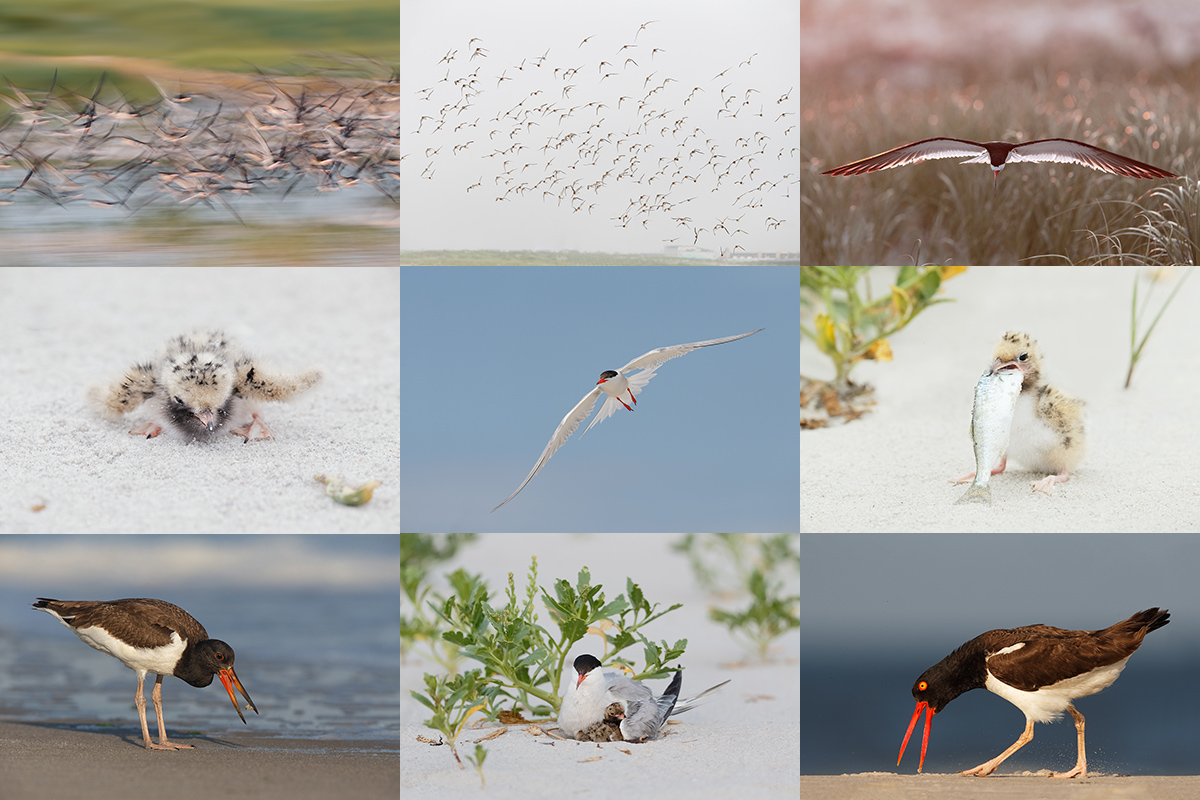













Ah, interesting that its different for long focal lenses, thanks!
The 1/3, 2/3 dof theory is a myth. It is pretty close to 50/50 for al focal lengths at the usual wildlife ranges. Anyone using LensAlign should see this. If you are getting unbalanced dof at say, 50-100
feet, you need to calibrate your AF.
Most folks are on the right track, but…. With long effective focal lengths d-o-f is about 50/50, 50% in front of the point of focus and 50% behind…. 1/3 of the way down the bill is pretty close to 1/2 the distance from the eye to the bill tip…. Think about it: it is NOT the old landscape trick. But it is similar.
Note to Loren: if a skimmer is facing you dead on and is really close it is close to impossible to get everything sharp….
Artie –
Understood; thanks for the clarification 🙂
You focussed a third of the way down the bill and stopped down to ensure the tip to top of the bill and the eye was in focus (The old hyper focal trick, used by Landscape photographers) – Normally if you focus on something like the bird,at the third way down, you’ll get twice as much in focus behind the focus point as in front.
Did you use Depth of Field preview?
I love the first image; I’ve never seen one like that of a skimmer. I actually did a double-take, thinking for an instant it was a puffin.
Image # 1 is my favourite.
When you enlarge this image you are viewing the bird at it’s level, entering it’s world, making the whole experience very personal. Great Image!! I love it!!
Why did I focus about 1/3 of the way down the bill rather than on the bird’s eye (a new technique that I developed only very recently)?
Insures that the tip of the bill will be in focus when the bird (or, I imagine, any other animal) is facing you. This technique becomes more important as the subject’s head angle is closer to head-on.
Good tip!
Regarding sales through your links, I am wondering if B&H could be induced to provide free shipping? Or have they? I get free shipping from B&H through KelbyOne membership but I don’t know how I could get it using your link. Can I?
You focused one third of the way down the bill because the bird is turned a bit toward you and this puts the zone of focus from the tip of the bill to the eye. If you focused on the eye the tip of the bill would be out of focus while the zone of focus would extend back onto the head, perhaps even to the back of the neck.